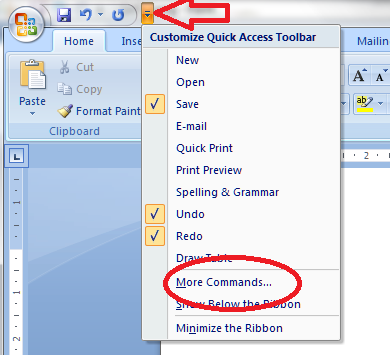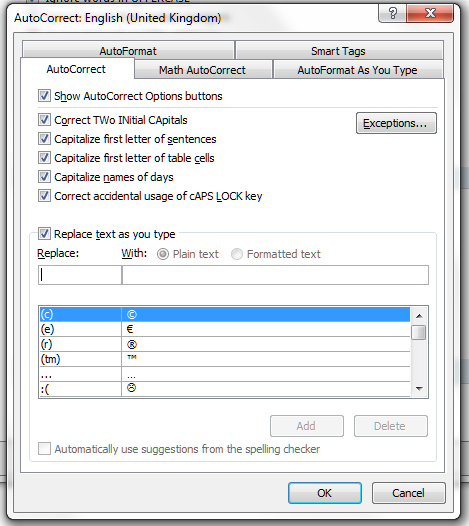 Welcome to Saturday Business chat.Today’s Freelancer is Tammy Ditmore from eDitmore Editorial Services, who I know through a network of editorial professionals we both belong to. Tammy’s one of our newer businesses, having been going for around 18 months (this time round), and is one of our freelancers based in the US – but as you can see, we all have similar issues and learning curves, wherever in the world we might be!
Welcome to Saturday Business chat.Today’s Freelancer is Tammy Ditmore from eDitmore Editorial Services, who I know through a network of editorial professionals we both belong to. Tammy’s one of our newer businesses, having been going for around 18 months (this time round), and is one of our freelancers based in the US – but as you can see, we all have similar issues and learning curves, wherever in the world we might be!
Tammy has some interesting things to say about the difference between being a freelancer and running a business, and also about the resources that are out there for both business people in general and editors in particular.
What’s your business called?
eDitmore Editorial Services.
When did you set it up?
January 2011.
What made you decide to set up your own business?
I had been working as the managing editor of an academic journal for more than five years, but the situation had become very stagnant and I wanted something different. I wanted to edit more and manage less. I applied for several editing and/or writing jobs in my area and got nowhere—I couldn’t even get an interview. I finally decided it was time to return to freelance editing, which I had done before I started at the journal. But when I freelanced before, I never thought of it as a business; I just took whatever work happened to come my way. This time I wanted to be more official. So I established a name, created a website, and set myself up legally as a “sole proprietorship”.
What made you decide to go into this particular business area?
I have been involved in editing in one way or another for about 30 years. I graduated from college with a journalism degree and spent more than 10 years in various editor roles at several daily newspapers. I left newspapers when my oldest son was a baby and wound up working from home as a freelance editor, proofreader and writer while my kids were young. Then I took the academic journal position, and learned more about running a business. By the time I started my business, I had editing or writing experience in a number of styles and publications.
Had you run your own business before?
Although I had worked as a freelance editor for a number of years, I had not thought of myself during those years as running a business. I did not have a business name; I did not market or advertise; and I never thought of myself as a businesswoman. When I decided to leave my position with the academic journal, I knew I needed to do things differently. I wanted to see my work—and I wanted other people to see this—as my business, not just something I was doing until I could get a real job.
How did you do it? Did you launch full-time, start off with a part-time or full-time job to keep you going … ?
While I was still at the journal, I made my business plans and did the preliminary work, like getting a logo and a website. By the time I left that job, I had one contract that I knew would keep me very busy for a few weeks and would provide some steady work throughout the year. I was lucky; I could take some risks because my husband’s job was very safe and I didn’t have to worry about insurance benefits since our family was insured through him. That made it less risky for me to step away from the steady paycheck.
What do you wish someone had told you before you started?
I wish I had known how many resources were available to help get me started, such as editing classes and training, list-serves and discussion groups, online invoicing, etc. I did not need to reinvent so many things—it was all out there but I didn’t know where to look for it.
What would you go back and tell your newly entrepreneurial self?
“You don’t have to go it alone,” and, “You know more than you think you do”.
What do you wish you’d done differently?
I wish I had taken more time off between finishing my journal job and really plunging into work on my own. I think it would have been good to take some editing classes and just spend some time thinking about what I wanted to do and how. I expected to have slow spells in my first few months where I could focus on such things, but I never really did.
What are you glad you did?
I’m glad that I paid to have a logo designed around my business name and that I was able to get a professional to design my website. Both turned out better than I had envisioned and are definitely memorable.
What’s your top business tip?
It’s not a very original one—I would say you should network. Join professional organizations in your field; volunteer for specific roles; and tell everyone you know about your business. Some of my best and most unexpected business has come from very unlikely places.
How has it gone since you started? Have you grown, diversified or stayed the same?
Much better than I had expected. I almost doubled the income goal I had set for myself for the first year, and I have turned away work on several occasions. Even more important to me, I have been able to work on a wide variety of publications and manuscripts for a variety of publishers, authors, and students. In a little more than a year, I have worked on books and articles about Puritan theology, international counter-terrorism tactics, Christian ethics, Facebook advertising, the original Saint Nicholas, and successful car dealers, and I have just started editing my first novel. Also, I am truly enjoying learning more about today’s rapidly changing publishing world and how to market and run my business. I have started to think more like a businesswoman in addition to thinking like an editor.
Where do you see yourself and your business in a year’s time?
I am considering some steps now to raise my business profile and visibility, so I hope that by this time next year more people will know about eDitmore Editorial Services.
I know what Tammy means about expecting a slow spell between finishing the day job and launching the business – I thought that about Jan/Feb 2012, but went straight into full-time busy-ness. Still, it’s good to be busy! And I wish Tammy all success through this next important year for her business. Read her 2013 update here.
Tammy’s website is at www.editmore.com and you can of course contact her by email. She’s based in Califormia.
If you’ve enjoyed this interview, please see more freelancer chat, the index to all the interviewees, and information on how you can have your business featured.
 I’ve encountered this one a few times recently, so it’s time to differentiate between between and among. Or among between, betwixt, among and amongst. Did you see what I did there?
I’ve encountered this one a few times recently, so it’s time to differentiate between between and among. Or among between, betwixt, among and amongst. Did you see what I did there?






















